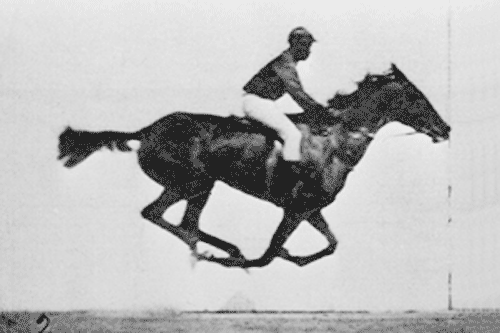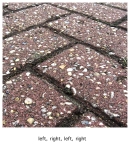This is an absolutely huge question to ask, because photography does not exist as one simple, uncomplicated practice. The camera and photography operates in many different contexts, including but limited to medicine, law and fashion. Photography is used to take images of crime scenes and these are relied upon as evidence in order to determine what crime was committed and who is responsible. In fashion, photography is used to display the product in use and to make it as appealing to the viewer as possible. Eadward Muybridge used photography in a scientific context to prove that when a horse gallops, there is a moment when all four feet leave the ground.
For my research project, I will be focusing on photography in a social context, examining the role of the practice for the everyday individual. But first I need to establish why the practice of photography actually exists in the first place, before it was absorbed into other disciplines and daily rituals. Andre Bazin, writing in 1990 has established an argument reasoning the existence of photography in ‘The Ontology of the Photographic Image’. Bazin identifies the the humans as a species are constantly focused on the preservation of life, particularly in the Ancient Egyptian Era. The predominate attempt at the preservation of life is to produce a representation of it, in order to avoid what Bazin calls ‘a second spiritual death’ (Bazin 1990: 6). This second spiritual death involves the creation of a lasting representation, so despite the physical body of the subject disappearing from the Earth, there is still a recognisable visual representation that remains as evidence that the subject has lived. This is where the practice of photography is relevant, because aside from the other art forms such as painting, sculpture and sketching, photography provides a highly realistic representation. According to Andre Bazin however, photography remains separate from the other art forms, because there is no visible evidence of the human in the creation of the image. In art you can see the brush strokes of the artist, in sculpture you can see whether the artist has shaped the material, but in photography the machine is solely responsible for the process. Bazin states the photography benefits from this absence of man, which means it can be considered as an objective practice.
With the help of Andre Bazin, I have been able to establish a reasoning as to why the practice of photography exists, however when reading ‘The Ontology of the Photographic Image’, I have identified some problematic areas. Most specifically Bazin identifying photography as an objective practice; this statement has some truth when considering photography in areas such as medicine or law, where the practice is heavily regulated and standardised in order to produce consistent, reliable visual material. However in a social context, there are no rules or regulations surrounding the practice of photography, the owner of the camera is relatively free to photograph what they want. There are ethical concerns surrounding photographing certain material, however the individual can choose whether or not to abide by these moral suggestions. The notion that a photograph tells the truth has partially framed the practice of social photography, because photography has been used to document the life and family of the individual. The viewers of these images believe the content, because it appears to be telling them a simple, uncomplicated message (for example, this person was standing in front of this monument) however the person producing the image still made decisions when framing the scene.
Despite this blog post appearing to ask an unanswerable question, using Andre Bazin’s ‘The Ontology of the Photographic Image’ has enabled me to explore why photography actually exists. Bazin’s concept of the second spiritual death is actually really interesting and certainly could explain the phenomenon of selfies, however the images made by the users on Instagram are not always of the self. Therefore there must be a reason behind this deviation of content, or perhaps I should be considering the representation of the self in a more abstract way.
References:
Bazin, A. (1960) ‘The Ontology of the Photographic Image’. Film Quarterly 13 (4) 4-9










